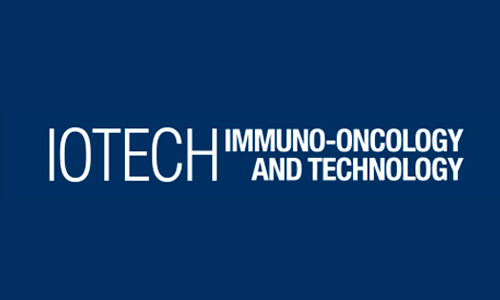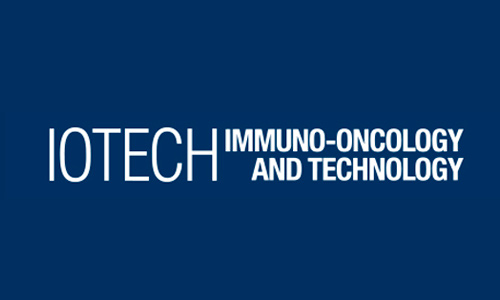- Follow Us
Publications
Papers and articles featuring CDI Labs products and services
221 Total Publications
Refine Your Search
Publication Details
- Year
- Link
- + Abstract

Diabetes
- HuProt: Autoantibodies to Perilipin-1 Define a Subset of Acquired Generalized Lipodystrophy
- Caleigh Mandel-Brehm, Joseph L. DeRisi, et. al.
- Dept of Biochemistry and Biophysics, University of California, San Francisco
HuProt Autoantibodies: Acquired lipodystrophy is often characterized as an idiopathic subtype of lipodystrophy. Despite suspicion of an immune-mediated pathology, biomarkers such as autoantibodies are generally lacking. Here, we used an unbiased proteome-wide screening approach to identify autoantibodies to the adipocyte-specific lipid droplet protein perilipin 1 (PLIN1) in a murine model of autoimmune polyendocrine syndrome type 1 (APS1). We then tested for PLIN1 autoantibodies in human subjects with acquired lipodystrophy with two independent severe breaks in immune tolerance (including APS1) along with control subjects using a specific radioligand binding assay and indirect immunofluorescence on fat tissue.

Journal of Biological Chemistry
- HuProt: A midposition NOTCH3 truncation in inherited cerebral small vessel disease may affect the protein interactome
- Soo Jung Lee, Xiaojie Zhang, Gang Xu, Jimo Borjigin, Michael M. Wang
- Dept of Neurology, University of Michigan
Mutations in NOTCH3 underlie cerebral autosomal dominant arteriopathy with subcortical infarcts and leukoencephalopathy (CADASIL), the most common inherited cerebral small vessel disease. Two cleavages of NOTCH3 protein, at Asp80 and Asp121, were previously described in CADASIL pathological samples. Using monoclonal antibodies developed against a NOTCH3 neoepitope, we identified a third cleavage at Asp964 between an Asp-Pro sequence. We characterized the structural requirements for proteolysis at Asp964 and the vascular distribution of the cleavage event. A proteome-wide analysis was performed to find proteins that interact with the cleavage product.

EliScholar - Yale
- HuProt: Data Processing And Analysis Of The Distribution Of Autoantibodies In Healthy Individuals
- Helen Lynn Ngov
- Yale University
Background: IgM and IgG autoantibodies are present in healthy humans and there are also unique autoantibodies that make up the majority of autoantibodies present in the human body. The primary objective of this study was to identify proteins that are consistently expressed at baseline levels in healthy patients, with the intention of establishing a set of shared or common proteins that can be targeted for further investigation in future research endeavors.

Molecular Oncology
- Human Proteome Microarray identifies autoantibodies to tumor-associated antigens as serological biomarkers for the diagnosis of hepatocellular carcinoma
- Qian Yang, Peng Wang, et. al.
- The State Key Laboratory of Esophageal Cancer Prevention & Treatment, Zhengzhou University
HuProt Autoantibodies: The identification of the high-efficiency and non-invasive biomarkers for hepatocellular carcinoma (HCC) detection is urgently needed. This study aims to screen out potential autoantibodies to tumor-associated antigens (TAAbs) and to assess their diagnostic value for HCC. Fifteen potential TAAbs were screened out from the Human Proteome Microarray by 30 HCC sera and 22 normal control sera, of which eight passed multiple-stage validations by ELISA with a total of 1625 human serum samples from normal controls (NCs) and patients with HCC, liver cirrhosis, chronic hepatitis B, gastric cancer, esophageal cancer, and colorectal cancer.

IOTECH Immuno-oncology and Technology
- PhIP-Seq: Human virome epitope-level antiviral antibody profiling identified the cytomegalovirus (CMV) as the main driver of senescent immune phenotype (SIP) in patients with advanced non-small cell lung cancer (aNSCLC)
- M. Naigeon, B. Besse, et. al.
- Laboratoire d\'Immunomonitoring en Oncologie, Université Paris Saclay
Immunosenescence is a progressive remodeling of immune functions with a multifactorial etiology including aging and chronic antigenic stressors (inflammation, infections, cancer). We showed that a high pretreatment SIP (CD28–CD57+KLRG1+CD8+ circulating T cells>39.5%, SIP+) was associated with resistance to ICB in patients with aNSCLC. Chronic viral infections may speed up immune aging, especially CMV which affects blood T cells phenotype (loss of CD28, overexpression of CD57). We aimed to assess antiviral serological profile and its association with SIP status.

IOTECH Immuno-oncology and Technology
- PhIP-Seq: Peripheral pre-existing T cell immunity as predictive biomarker in cancer immunotherapy for NSCLC patients
- A. Xagara, A. Kotsakis, et. al.
- Medical Oncology Dept, University of Thessaly
Pre-existing immunity that describes the endogenous tumor-specific adaptive immunity, before treatment may represent a valuable novel predictive biomarker for ICI treatment. In this study we estimate the potential value of pre-existing cancer-antigen specific CD8+ T cells as circulating predictive biomarkers. Additionally, we evaluate the major differences of known immune cell phenotypes between Pre-existing positive (PreI+) and Pre-existing negative (PreI-) NSCLC patients in circulation.

Proteomics Clinical Applications
- HuProt: A protein microarray-based serum proteomic investigation reveals distinct autoantibody signature in colorectal cancer
- Abhilash Barpanda, Sanjeeva Srivastava, et. al.
- Centre for Research in Nanotechnology & Science, Indian Institute of Technology
HuProt Autoantibodies: Colorectal cancer (CRC) has been reported as the second leading cause of cancer death worldwide. The 5-year annual survival is around 50%, mainly due to late diagnosis, striking necessity for early detection. This study aims to identify autoantibody in patients’ sera for early screening of cancer.

Blood
- HuProt: Pediatric Evans Syndrome Displays Broad Immune Dysregulation Characterized By Extra-Follicular B-Cell Responses and Unique Autoantibody Repertoire
- Deepak Kumar, Shanmuganathan Chandrakasan, et. al.
- Aflac Cancer and Blood Disorder Center, Dept of Pediatrics, Children\'s Healthcare of Atlanta
Pediatric Evans Syndrome (pES) is a rare autoimmune disorder characterized mainly with the co-occurrence of autoimmune hemolytic anemia and immune thrombocytopenia. Although around 40% of patients with pES have known genetic variants associated with inborn errors in immunity (IEI), the underlying immune anomalies especially B cell dysregulation are poorly understood. In our recent study, when compared to single lineage cytopenia such as chronic immune thrombocytopenia (cITP), we showed that patients with pES are characterized by abnormal expansion of circulating T-follicular helper cells (cTfh), increased T-cell activation, decreased naïve CD4+ T as well as class-switched memory B (CSMB) cells (Kumar et al., Blood 2022).

Research Square
- HuProt: Unbound IRF2 to IRF2BP2 mediates KLF4 signaling leading to anti-inflammatory phenotype of microglia
- Jiwon Kim, A Young Sim, Sumit Barua, Jong Youl Kim, Jong Eun Lee
- Dept of Anatomy, Yonsei University College of Medicine
HuProt Small Molecule: Following central nervous system (CNS) injury, the investigation for neuroinflammation is vital because of its pleiotropic role in both acute injury and long-term recovery. Agmatine (Agm) is well known for its neuroprotective effects and anti-neuroinflammatory properties. However, Agm’s mechanism for neuroprotection is still unclear. We screened target proteins that bind to Agm using a protein microarray; the results showed that Agm strongly binds to interferon regulatory factor 2 binding protein (IRF2BP2), which partakes in the inflammatory response.

Clinical and Translational Medicine
- PhIP-Seq: Comprehensive profiling of the human viral exposome in households containing an at-risk child with mitochondrial disease during the 2020–2021 COVID-19 pandemic
- Eliza M. Gordon-Lipkin, Peter J. McGuire, et. al.
- Metabolism, Infection and Immunity Section, National Institutes of Health
Viral infection is a major cause of morbidity in children with mitochondrial disease (MtD). As a result, families with children with MtD are highly adherent to risk mitigation behaviours (RMBs) advised by the Centers for Disease Control and Prevention during the COVID-19 pandemic that can modulate infection risk.